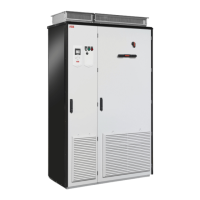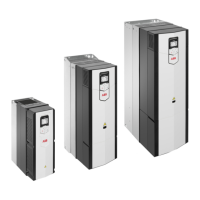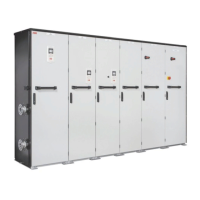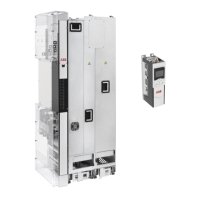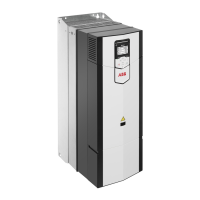Guidelines for planning the electrical installation 69
Implementing thermal overload and short-circuit
protection
Protecting the drive and input power cable in short-circuits
Protect the drive with fuses (a) and the input cable with fuses (b) or a circuit breaker as
shown below:
Size the fuses or the circuit breaker at the distribution board according to local regulations
for the input cable protection. Select the fuses for the drive according to the instructions
given in chapter Technical data. The fuses for the drive protection will restrict drive
damage and prevent damage to adjoining equipment in case of a short-circuit inside the
drive.
Note: If the fuses for the drive protection are placed at the distribution board and the input
cable is dimensioned according to the nominal input current of the drive given in the rating
table on page 183, the fuses will protect also the input cable in short-circuit situations,
restrict drive damage and prevent damage to adjoining equipment in case of a short-circuit
inside the drive. No separate fuses for the input cable protection are needed.
Circuit breakers
aR fuses must be used with circuit breakers.
Protecting the motor and motor cable in short-circuits
The drive protects the motor cable and motor in a short-circuit situation when the motor
cable is dimensioned according to the nominal current of the drive. No additional
protection devices are needed.
Protecting the drive and the input power and motor cables against
thermal overload
The drive protects itself and the input and motor cables against thermal overload when the
cables are dimensioned according to the nominal current of the drive. No additional
thermal protection devices are needed.
WARNING! If the drive is connected to multiple motors, use a separate circuit
breaker or fuses for protecting each motor cable and motor against overload. The
drive overload protection is tuned for the total motor load. It may not trip due to an
overload in one motor circuit only.
Protecting the motor against thermal overload
According to regulations, the motor must be protected against thermal overload and the
current must be switched off when overload is detected. The drive includes a motor
thermal protection function that protects the motor and switches off the current when
necessary. Depending on a drive parameter value, the function either monitors a
calculated temperature value (based on a motor thermal model) or an actual temperature
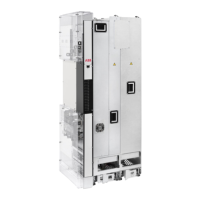
